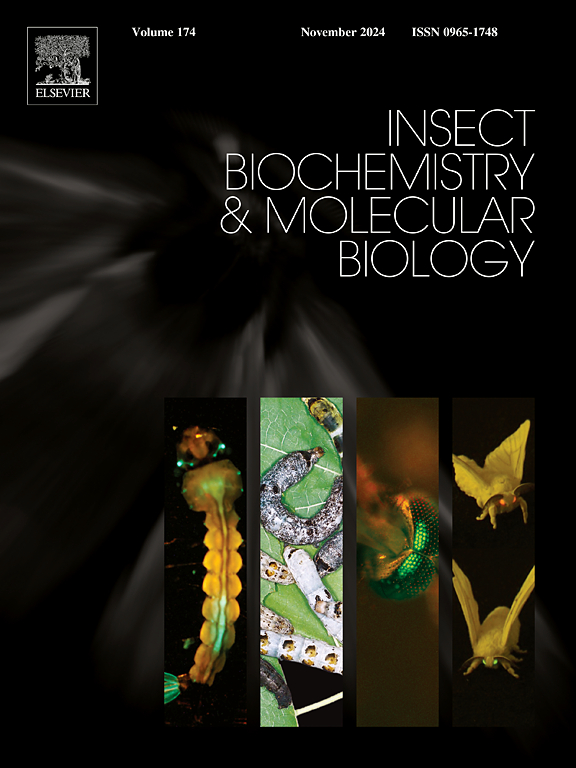Differentially spliced mitochondrial CYP419A1 contributes to ethiprole resistance in Nilaparvata lugens
IF 3.2
2区 农林科学
Q2 BIOCHEMISTRY & MOLECULAR BIOLOGY
引用次数: 0
Abstract
The brown planthopper Nilaparvata lugens is one of the most economically important pests of cultivated rice in Southeast Asia. Extensive use of insecticide treatments, such as imidacloprid, fipronil and ethiprole, has resulted in the emergence of multiple resistant strains of N. lugens. Previous investigation of the mechanisms of resistance to imidacloprid and ethiprole demonstrated that overexpression and qualitative changes in the cytochrome P450 gene CYP6ER1 lead to enhanced metabolic detoxification of these compounds. Here, we present the identification of a secondary mechanism enhancing ethiprole resistance mediated by differential splicing and overexpression of CYP419A1, a planthopper-specific, mitochondrial P450 gene. Although metabolic resistance to insecticides is usually mediated by overexpression of P450 genes belonging to either CYP 3 or 4 clades, we validate the protective effect of over-expression of CYP419A1, in vivo, using transgenic Drosophila melanogaster. Additionally, we report some unusual features of both the CYP419A1 gene locus and protein, which include, altered splicing associated with resistance, a non-canonical heme-binding motif and an extreme 5’ end extension of the open reading frame. These results provide insight into the molecular mechanisms underpinning resistance to insecticides and have applied implications for the control of a highly damaging crop pest.

不同剪接的线粒体CYP419A1有助于Nilaparvata lugens对乙硫虫的抗性。
褐飞虱(Nilaparvata lugens)是东南亚栽培水稻最重要的经济害虫之一。大量使用杀虫剂,如吡虫啉、氟虫腈和乙虫腈,导致了多重耐药菌株的出现。先前对吡虫啉和乙巯普罗耐药机制的研究表明,细胞色素P450基因CYP6ER1的过表达和质变导致这些化合物的代谢解毒增强。在这里,我们提出了通过差异剪接和过表达CYP419A1(一种飞虱特异性的线粒体P450基因)介导的增强乙硫虫抗性的第二机制的鉴定。虽然对杀虫剂的代谢抗性通常是由cyp3或4分支的P450基因过表达介导的,但我们在体内用转基因果蝇验证了CYP419A1过表达的保护作用。此外,我们报告了CYP419A1基因位点和蛋白的一些不寻常的特征,包括与抗性相关的剪接改变,非规范血红素结合基元和开放阅读框的极端5'端延伸。这些结果提供了对杀虫剂抗性的分子机制的深入了解,并对控制高度破坏性作物害虫具有应用意义。
本文章由计算机程序翻译,如有差异,请以英文原文为准。
求助全文
约1分钟内获得全文
求助全文
来源期刊
CiteScore
7.40
自引率
5.30%
发文量
105
审稿时长
40 days
期刊介绍:
This international journal publishes original contributions and mini-reviews in the fields of insect biochemistry and insect molecular biology. Main areas of interest are neurochemistry, hormone and pheromone biochemistry, enzymes and metabolism, hormone action and gene regulation, gene characterization and structure, pharmacology, immunology and cell and tissue culture. Papers on the biochemistry and molecular biology of other groups of arthropods are published if of general interest to the readership. Technique papers will be considered for publication if they significantly advance the field of insect biochemistry and molecular biology in the opinion of the Editors and Editorial Board.

 求助内容:
求助内容: 应助结果提醒方式:
应助结果提醒方式:


